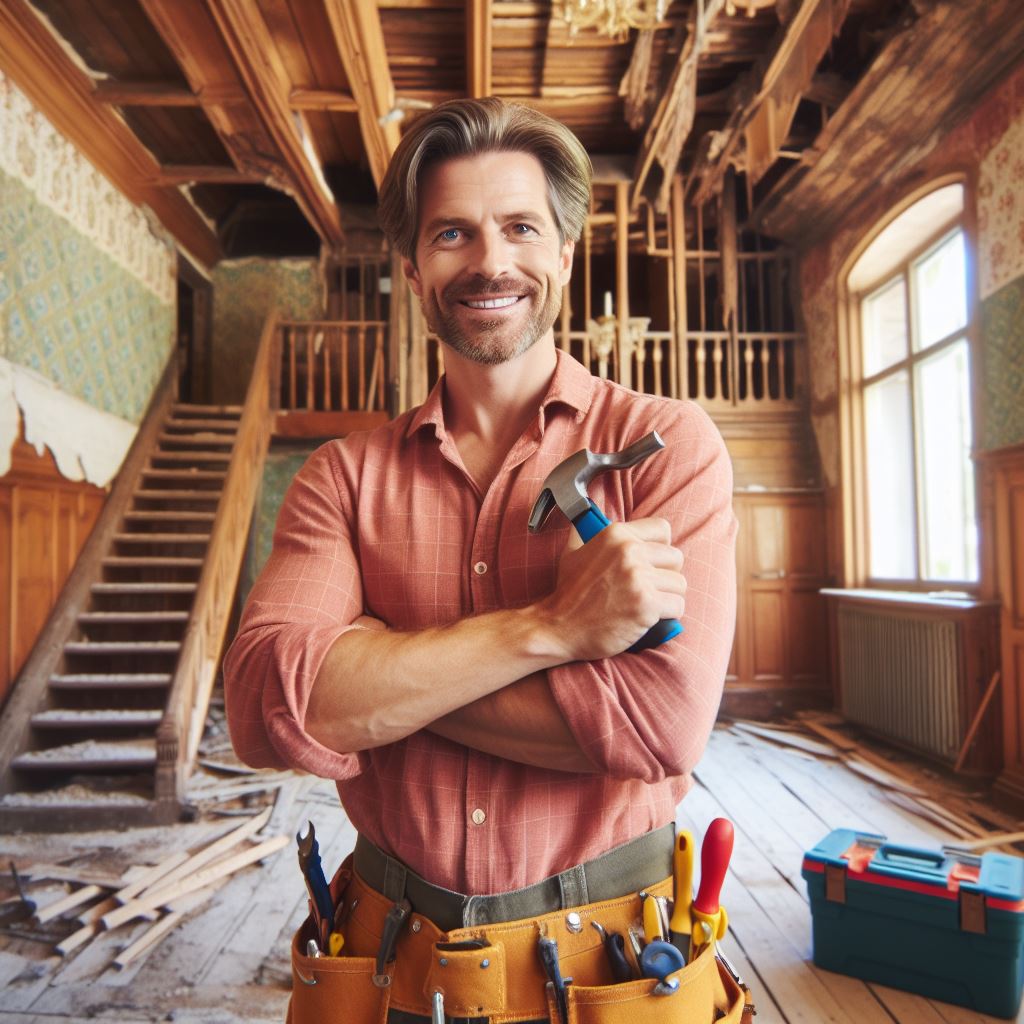Introduction
Heritage homes, also known as historic homes, are buildings that have significant historical, cultural, or architectural value.
These homes are not only a part of our heritage but also offer a unique charm and character that is hard to replicate.
Preserving the historical integrity of heritage homes is crucial as it allows us to appreciate and learn from the past.
These homes offer a glimpse into different eras and architectural styles, showcasing the craftsmanship and design principles of their time.
However, to maintain the authenticity of these homes, it is essential to decorate them with period-appropriate decor.
Using historically accurate furnishings and decorative elements recreates the ambiance and atmosphere of the home’s original era.
Period-appropriate decor helps to transport us back in time, making us feel connected to the rich history and stories of the house.
It adds to the overall charm and nostalgia, creating a unique living experience for homeowners and visitors alike.
When decorating a heritage home, it is important to conduct thorough research on the architectural style and time period of the house.
This helps in selecting the right pieces of furniture, artwork, textiles, and color schemes that align with the home’s historical context.
By preserving the historical integrity of heritage homes through period-appropriate decor, we not only honor our past but also create spaces that tell a story and offer a truly authentic experience.
Let’s explore various aspects of period-appropriate decor in the following sections.
Understanding Period-Appropriate Decor
Period-appropriate decor
- Period-appropriate decor refers to designing and decorating a heritage home in a style that aligns with a specific historical era.
- It involves recreating the look and feel of the time period when the heritage home was originally built.
- The aim is to pay homage to the history and heritage of the home, preserving its authenticity.
Researching the specific era and style of the heritage home
- Begin by determining the time frame in which the heritage home was constructed.
- Research architectural styles, interior design trends, and popular aesthetics of that era.
- Look for historical documents, photographs, and books to gather visual references and gain insights into the period’s design aesthetic.
Key elements and design characteristics
- Study the architectural details of the heritage home, such as mouldings, ceiling height, and flooring materials.
- Pay attention to the period’s furniture styles, fabrics, colors, and patterns used in interior design.
- Identify the specific motifs, ornamentation, and materials associated with that era’s decor.
By understanding period-appropriate decor, homeowners can create a cohesive and historically accurate design scheme that respects the heritage of their home.
Read: Step-by-Step: Getting Your Renovation Permit
Furnishing the Heritage Home
Furniture selection
- When choosing furniture for your heritage home, opt for styles that belong to the same period.
- Consider the scale and proportion of the furniture to ensure it fits well within the space.
Upholstery and fabrics
- Select traditional patterns and textures for upholstery to maintain the period-appropriate decor.
- Use authentic materials or high-quality replicas to ensure the furniture stays true to its heritage.
Incorporating antiques and vintage pieces
- Integrating original pieces into your decor adds authenticity and character to your heritage home.
- Here are some tips for finding authentic antiques: research, visit antique stores, and consult experts.
Read: Vintage Home Modernization: How-To Guide
Color Schemes and Wall Treatments
When it comes to period-appropriate decor for heritage homes, color schemes and wall treatments play a significant role in capturing the essence of a specific era.
Researching historical paint colors and selecting suitable wall treatments are crucial steps in achieving an authentic look and feel.
Researching historical paint colors
One cannot underestimate the impact of a well-chosen paint color on the overall ambiance of a heritage home.
To ensure accuracy, it is essential to refer to historical records and color charts that specifically outline the popular paint colors of the desired era.
These references can offer valuable insights into the color palettes that were prevalent during different historical periods.
- Utilizing color charts and historic records: Color charts and historical records provide a wealth of information on period-appropriate paint colors. They showcase the hues and shades that were commonly used during a specific era. Reviewing these resources can help homeowners narrow down their choices and make informed decisions.
- Consulting professionals if unsure: If homeowners are unsure about the accuracy of their chosen paint colors, it is advisable to consult professionals such as historians or interior designers. These experts have extensive knowledge and experience in recreating historical aesthetics and can provide valuable guidance in selecting the most suitable colors for a heritage home.
Choosing appropriate wall treatments
Wall treatments can significantly impact the authenticity and charm of a heritage home.
The right choice of wallpaper options, patterns, and decorative moldings can elevate the overall visual appeal and transport occupants back to the desired historical period.
- Wallpaper options and patterns: Researching the wallpaper designs that were in vogue during the desired era can help homeowners choose appropriate options. By selecting wallpaper that reflects the specific time period, the walls can become living testaments to the history of the house.
- Adding decorative moldings and trims: Plain walls can be transformed into stunning features by adding decorative moldings and trims. These architectural details were commonly found in heritage homes of the past and can give a space an authentic period look. From crown moldings to intricate trims, there are various options to choose from, depending on the era of interest.
When embarking on decorating a heritage home, attention to detail is key.
The choice of color schemes and wall treatments should align with the historical period being represented.
By utilizing color charts, consulting professionals if needed, and incorporating appropriate wallpaper and decorative moldings, homeowners can create an environment that embraces the rich history of their heritage home.
Read: Decoding Building Codes: A Beginner’s Guide
Flooring and Window Treatments
When it comes to period-appropriate decor for heritage homes, attention to detail is key.
Capturing the essence of a bygone era requires carefully selecting each element, including the flooring and window treatments.
Restoring or replicating original flooring
Restoring or replicating the original flooring in your heritage home can greatly enhance its historical charm.
Before making any changes, it’s essential to research the types of flooring commonly used during the home’s era.
Types of flooring commonly used in heritage homes
Heritage homes often featured hardwood flooring, which offers durability and a timeless appeal.
Other popular options included marble and ceramic tiles. Research and consult with experts to ensure authenticity.
Repairing or refinishing existing floors
If your heritage home already has original flooring, it’s worth considering repairing or refinishing it.
This process can bring back the flooring’s former glory while maintaining its historical authenticity.
Hire professionals experienced in heritage home restoration for the best results.
Selecting window treatments
Window treatments play a significant role in enhancing the overall aesthetic of a heritage home.
When choosing window treatments, it’s important to select options that align with the specific era of your home.
Curtains and drapes in line with the home’s era
To achieve a period-appropriate look, opt for curtains and drapes that reflect the style and design prevalent during the era of your heritage home.
Research the popular fabrics, patterns, and colors used during that time.
Incorporating original or vintage window hardware
One way to add authenticity to your window treatments is by incorporating original or vintage window hardware.
Antique curtain rods, tiebacks, and window pulleys can contribute to the overall charm of the space while maintaining historical accuracy.
In essence, when considering period-appropriate decor for your heritage home, pay close attention to the flooring and window treatments.
Restoring or replicating the original flooring can accentuate the home’s historical charm.
Additionally, selecting window treatments that align with the era and incorporating authentic hardware can bring the entire space to life.
Always do thorough research and consult with experts to ensure the accuracy and authenticity of your choices.
Read: Navigating Permits for Historic Buildings

Lighting and Accessories
When it comes to period-appropriate decor for heritage homes, lighting and accessories play a crucial role in capturing the essence and charm of a bygone era.
Whether you’re renovating an old heritage home or simply want to enhance the unique character of your existing space, paying attention to the lighting fixtures and accessories can make a significant difference.
Finding period-appropriate lighting fixtures
Lighting is not only functional but also sets the mood and ambiance of a space.
To ensure that your lighting fixtures align with the period of your heritage home, consider the following options:
- Replicas or antique light fixtures: Opting for replicas or antique lighting fixtures can instantly transport you back in time. They are designed to imitate the look and feel of fixtures from specific eras and can be found in various architectural salvage stores or through specialized vendors. Choose fixtures that complement the architectural style of your heritage home for a cohesive and authentic aesthetic.
- Restoring existing fixtures if possible: If your heritage home already has original light fixtures, it’s worth exploring the option of restoring them. Restoring old fixtures not only maintains their historical value but also adds a sense of authenticity to the space. Consult with professionals experienced in heritage home preservation to ensure the restoration process is done correctly, preserving the fixtures’ integrity.
Adding authentic accessories and artwork:
Accessories and artwork can enhance the visual appeal of your heritage home while also reflecting its historical significance.
Here are some tips for incorporating period-appropriate accessories:
- Showcasing historical pieces: Look for accessories that were popular during the era your heritage home represents. These can include vases, clocks, or even vintage telephones. Display these historical pieces prominently, allowing them to become focal points and conversation starters.
- Understanding the significance of each item: Research the historical context of the accessories and artwork you choose. Understanding the stories behind these items will deepen your appreciation for their value and help you create a space that tells a more complete narrative of the past. Consider consulting with historians or curators to gain additional insights into the significance of specific pieces.
All in all, when decorating heritage homes, paying attention to lighting fixtures and accessories is essential.
By finding period-appropriate fixtures and incorporating authentic accessories, you can create an environment that not only respects the heritage of your home but also celebrates the history that it represents.
So, go ahead and let the light shine on your heritage home while adorning it with meaningful accessories that truly bring its unique story to life.
Maintaining Period-Appropriate Decor
Preserving the charm and authenticity of heritage homes requires a commitment to maintaining period-appropriate decor.
Here are key considerations to ensure your historic residence stands the test of time.
Regular Cleaning and Care
Period-appropriate decor demands diligent upkeep.
Dust and dirt can accumulate over the years, affecting the original luster of furnishings and fixtures.
Establish a routine cleaning schedule to protect delicate surfaces.
Use gentle, non-abrasive cleaning agents suitable for the specific materials prevalent in your home’s era.
For wooden elements, employ wood-specific cleaners and polish to enhance their natural beauty.
Avoid harsh chemicals that may strip away patina or damage delicate finishes.
Regular inspections for signs of wear, like peeling wallpaper or chipped paint, allow for timely repairs, preventing more extensive damage in the long run.
Considerations for Renovations and Updates
When contemplating renovations or updates, tread carefully to preserve the historical integrity of your home.
Research architectural styles prevalent during the era of construction, and choose materials and designs that align with the original aesthetic.
Reclaimed or reproduction items can be invaluable in maintaining authenticity.
Consider consulting with professionals experienced in heritage renovations to navigate potential challenges.
For instance, if updating the kitchen, opt for appliances and cabinetry that complement the historical context without compromising modern functionality.
Striking the right balance ensures a seamless integration of contemporary conveniences while respecting the heritage of your home.
The Importance of Consulting Preservation Experts
Preservation experts play a pivotal role in safeguarding the character of heritage homes.
Before initiating any significant restoration or renovation project, consult with specialists who understand the unique challenges posed by historic properties.
Preservation experts possess valuable knowledge regarding appropriate materials, techniques, and potential pitfalls.
Their guidance can help you make informed decisions that align with preservation standards and local regulations.
From selecting historically accurate paint colors to addressing structural issues, preservation experts ensure that your efforts contribute to the long-term sustainability of your heritage home.
By prioritizing regular maintenance, considering period-specific elements in updates, and consulting preservation experts, you can successfully navigate the nuanced task of maintaining period-appropriate decor in your cherished heritage home.
Conclusion
Period-appropriate decor plays a crucial role in maintaining the authenticity and charm of heritage homes.
By using furniture, accessories, and colors that are true to the time period, homeowners can create a cohesive and immersive experience that reflects the history and character of their property.
Preserving the historical integrity of heritage homes is not just a responsibility, but also an opportunity to celebrate the past.
By making thoughtful decor choices, homeowners can demonstrate their appreciation for history and ensure that future generations can continue to experience the unique charm of these homes.
Every piece of furniture, every paint color, and every accessory has the power to transport us back in time.
It is our duty to honor the heritage of these homes by carefully selecting items that are accurate to the period and style.
By researching the history of the home and the era it represents, homeowners can confidently choose furnishings and decorations that align with the original design and aesthetic.
Attention to detail and a commitment to authenticity will transform a heritage home into a living museum, where each room tells a story.
Not only does period-appropriate decor enhance the visual appeal of a heritage home, but it also adds value to the property.
Potential buyers or visitors who appreciate history will be drawn to a home that has been thoughtfully decorated and preserved.
Ultimately, the preservation of heritage homes is a collective effort.
By embracing period-appropriate decor, we can ensure that these architectural treasures continue to inspire and educate future generations about our rich cultural heritage.
Let us be guardians of history and advocates for timeless beauty.




